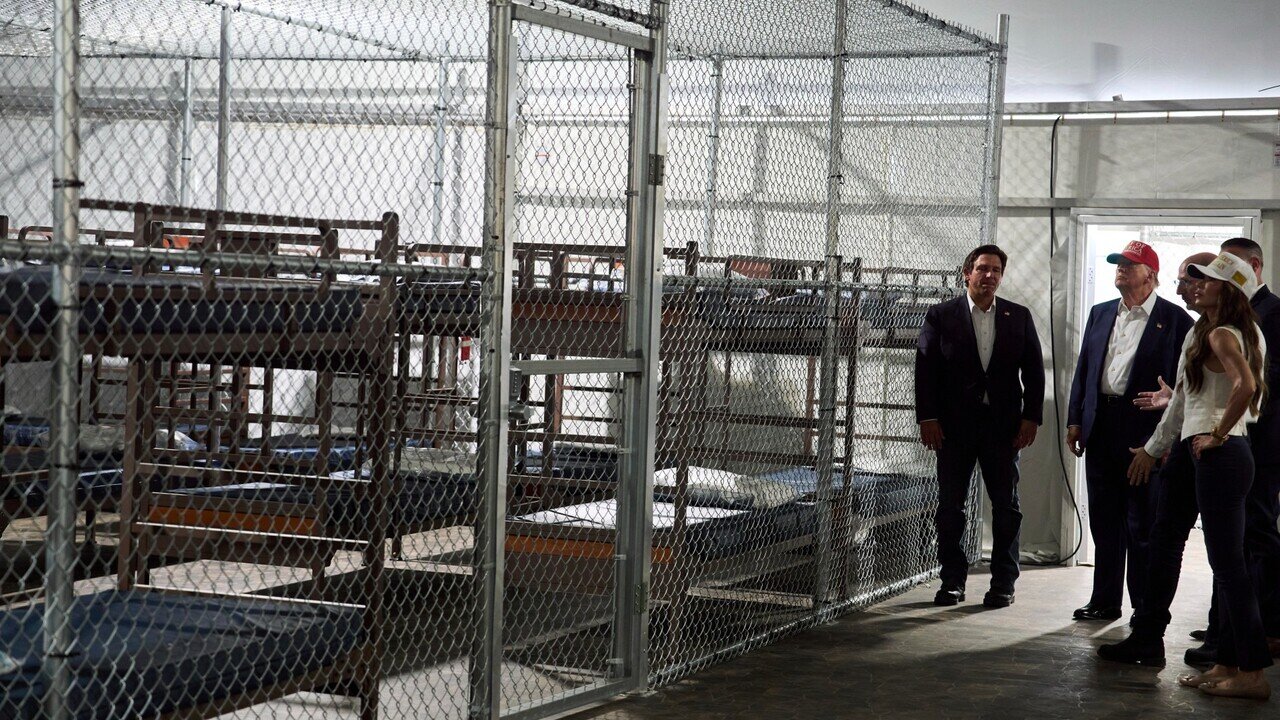
reasonstobecheerful.world
The Spark: How to Keep Your Community Cool During Heat Waves
Welcome back to The Spark, our monthly newsletter that’s all about how people just like you are creating positive change, one meaningful step at a time.
In this issue:
Pop-up cooling centers that anyone can set up in minutes
Don’t ditch that old air conditioner — donate it to a neighbor in need
How to cultivate a buddy system for vulnerable folks during heat waves
Pop goes the cooler
When temperatures soar in Sacramento, Joe Robustelli loads up a cooler with ice and bottled water, and sets it in front of his home on a busy downtown street. A laminated sign invites passersby to help themselves.
Robustelli is part of a network of dozens of Sacramentans who have turned their front yards into pop-up cooling stations during heat waves. In addition to hosting his own pop-up, he helps set up and refill others around the city through his job at Alchemist Community Development Corporation, a local food system organization.
Courtesy of Tortuguita Community Pantry
Alchemist CDC’s first pop-up cooling station appeared in 2020 as city residents were weathering the Covid-19 pandemic, nearby wildfires and extreme heat. Located in a community garden, it offered shade, chairs and water. Other neighbors, organizations and businesses soon launched their own — some with support from Alchemist CDC, others independently. At the summer peak in 2024, there were 42 pop-up cooling stations operating in the city.
These days, Robustelli says most stations look like his: A cooler or bin, filled with ice and stocked with bottled water, is all you need. “Don’t overthink it,” he says.
Robustelli’s station in downtown Sacramento gets a lot of foot traffic: Commuters, people who are unhoused, joggers and neighbors walking their dogs all stop by. Several times, Robustelli has found handwritten notes thanking him. He’s seen more than 200 water bottles used from his station in a single day.
“There are no barriers to people using it, so it truly is meeting people where they’re at,” he says. “It’s a non-judgmental way to build community with everyone.”
Weighed down by negative news?
Our smart, bright, weekly newsletter is the uplift you’ve been looking for.
[contact-form-7]
Around the world, heat waves are becoming longer and more intense. The effects are particularly acute in urban areas, where abundant asphalt surfaces and a lack of shade contribute to temperatures an average of eight degrees hotter than surrounding areas. Seven of the last 10 summers in California’s capital have ranked among the hottest on record, according to a recent Sacramento Bee analysis. This year, temperatures rose into the triple digits by late May.
In Sacramento, Robustelli notes, many neighborhoods don’t have much tree cover. Corner stores, where people might find reprieve, are scarce. And not everyone can afford to buy bottled water to cool down.
Courtesy of Tortuguita Community Pantry
After several years of fundraising for and stocking sites around the city, Alchemist CDC is scaling back to a few key stations as other community members launch their own cooling pop-ups. Tortuguita Community Pantry, an autonomous mutual aid group, now coordinates the citywide network of stations.
One key to making an impact is setting up a station in a location where people are likely to need it, Robustelli notes. A corner of a yard on a busy, exposed street will reach more people than a quiet side street with a lot of tree cover.
Organizers recommend hosts use a container they don’t mind losing. Occasionally, coolers get damaged or taken, though Robustelli has only lost an ice chest once. He keeps his attached to a tree with a chain, to encourage users to leave it so it can be restocked.
People who don’t have a yard in a prime spot can help host others in the neighborhood, Tortuguita Community Pantry organizers say, by donating beverages or helping to refresh stations with new ice throughout the day.
“This is very grassroots. It’s people in the community who are really managing them,” Robustelli says of the pop-ups. “It’s such an easy lift to provide some relief to those in your community that need it.”
Click here to learn more about running a community cooling station.
Reduce, reuse, refrigerate
Have an old air conditioner gathering dust? From New York City to Washington, D.C., community networks are helping get donated AC units into the homes of people who need them.
Credit: Andrea Marshall
After getting a request for an AC unit from a community member during the pandemic, northern New Jersey’s Montclair Mutual Aid group distributed more than 40 donated air conditioners. Volunteers collected, cleaned and tested them, and matched them to the needs of recipients. The system helped ensure people had working AC while stuck in their homes during lockdown, says Jonathan Marshall, who is involved with Montclair Mutual Aid.
According to Marshall, to run an AC exchange you simply need a protected space, like a garage, to store donated ACs, and a group of volunteers to clean and test each unit, and coordinate distribution. Marshall recommends finding recipients and donors through social media and gift economy groups.
While the approach is effective, Marshall cautions the workload can be heavy. His group has since shifted to encouraging people donating and seeking ACs to make direct connections through local online groups like Freecycle, Community Gifting or Curb Alert. This scaled-back model has another perk: building social connections within the community. “This has the benefits of bringing the recipients and donors closer together,” he says.
The buddy system
Southwesterners often don’t think of heat waves as natural disasters, like hurricanes or tornadoes. “It’s invisible,” says Courtney Slanaker, executive director of the Southern Arizona chapter of the American Red Cross. Yet, severe heat is responsible for more deaths than hurricanes, tornadoes and wildfires combined. And one of the biggest risk factors is social isolation.
That’s why volunteers with the American Red Cross go door-to-door here, meeting their local community members and encouraging them to get to know each other. “The number-one key to disaster survival really is if you know your neighbor,” says Slanaker.
Wait, you're not a member yet?
Join the Reasons to be Cheerful community by supporting our nonprofit publication and giving what you can.
Join
Cancel anytime
Across the country, community efforts are helping to boost social networks during heat waves. From Ohio to Oklahoma, Meals on Wheels volunteers check to see how their food recipients are weathering the heat. Volunteers in Vancouver reach out to older immigrants during heat waves. But you don’t need to be part of a formal organization to follow their lead.
Connecting with neighbors can be as simple as a conversation on a doorstep, says Slanaker. Ask about how they handled the high heat last summer. If you feel comfortable, find out if they rely on power for any medical equipment, or refrigeration for medication. She recommends exchanging phone numbers and checking in regularly as heat waves progress. Conversations like these can also help identify who in the community has critical items like a generator. “People have a lot to bring to the table,” she says.
The Spark is generously sponsored by Laura Rice.
The post The Spark: How to Keep Your Community Cool During Heat Waves appeared first on Reasons to be Cheerful.


















 Rumble
Rumble